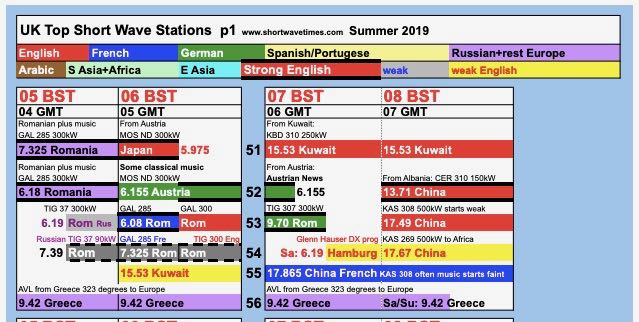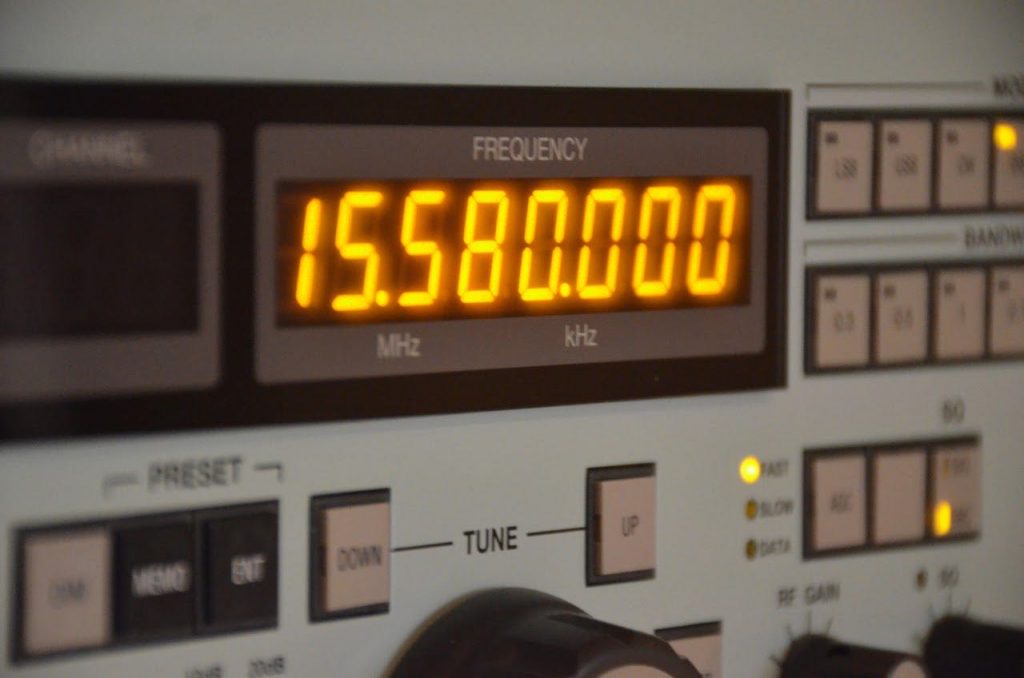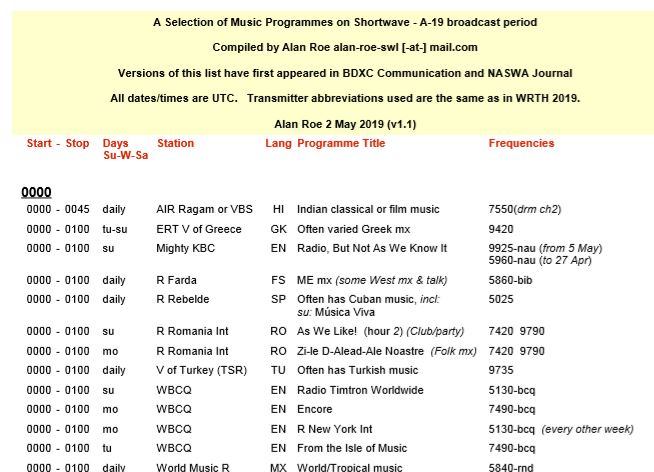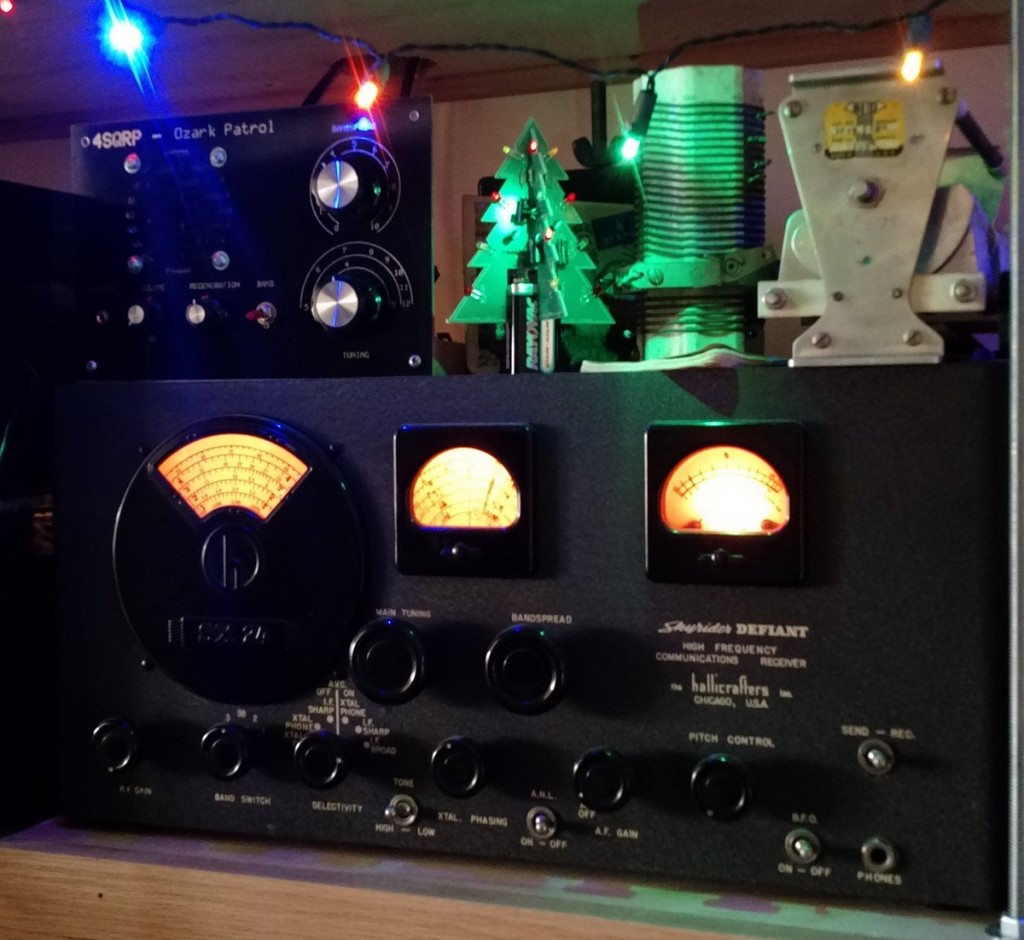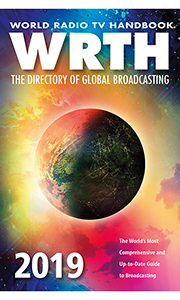Many thanks to SWLing Post contributor, Alex, who notes updates to his excellent frequency charts. Alex writes:
My charts are updated again. This time I have changed format and made the charts less time consuming to compile and – I think – more user friendly too.
The result is they are updated for the summer schedule much earlier – there are still 6 months of summer to go for them to be useful!
For each hour, the listener is given a running order of about 30 stations that are most worthwhile to try. Doing it this way means you can easily compare the reception quality of the different frequencies for the same station and also get an idea of each broadcaster’s strategy for reaching listeners.
For the summer, I have put the top station as number 51, down to about 80. Many radios have enough storage to allow you to set a page for each hour and then up to 100 presets for each page. This means you can check your favourite stations in a couple of minutes. There is less detail, but today time is so precious, the ease of use seemed to me to be the priority for the charts. (I have numbered 1 to 30 for the winter charts)
Thank you for once again updating and sharing your handy broadcast charts, Alex!
Click here to download Alex’s broadcast charts via his website, ShortwaveTimes.com.

